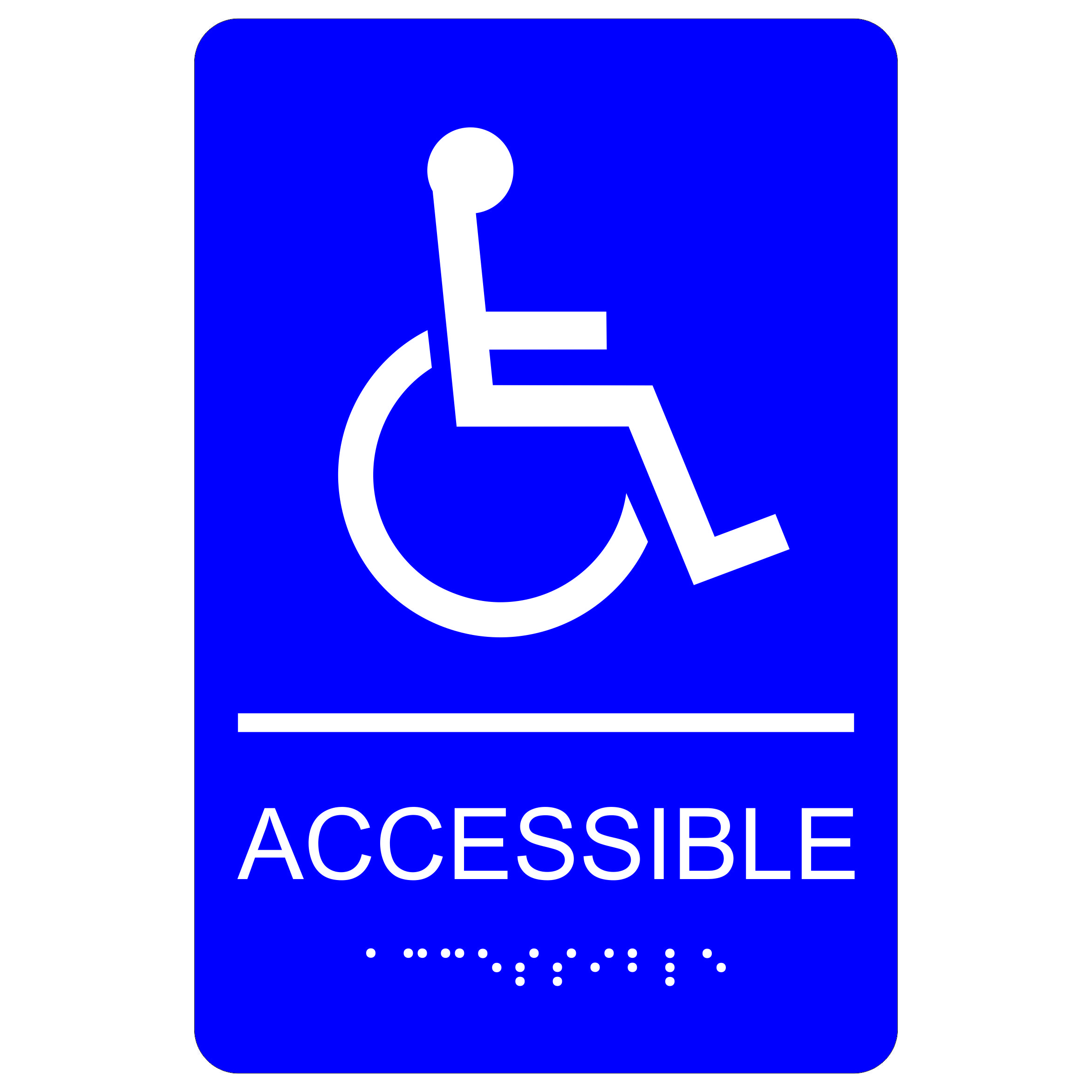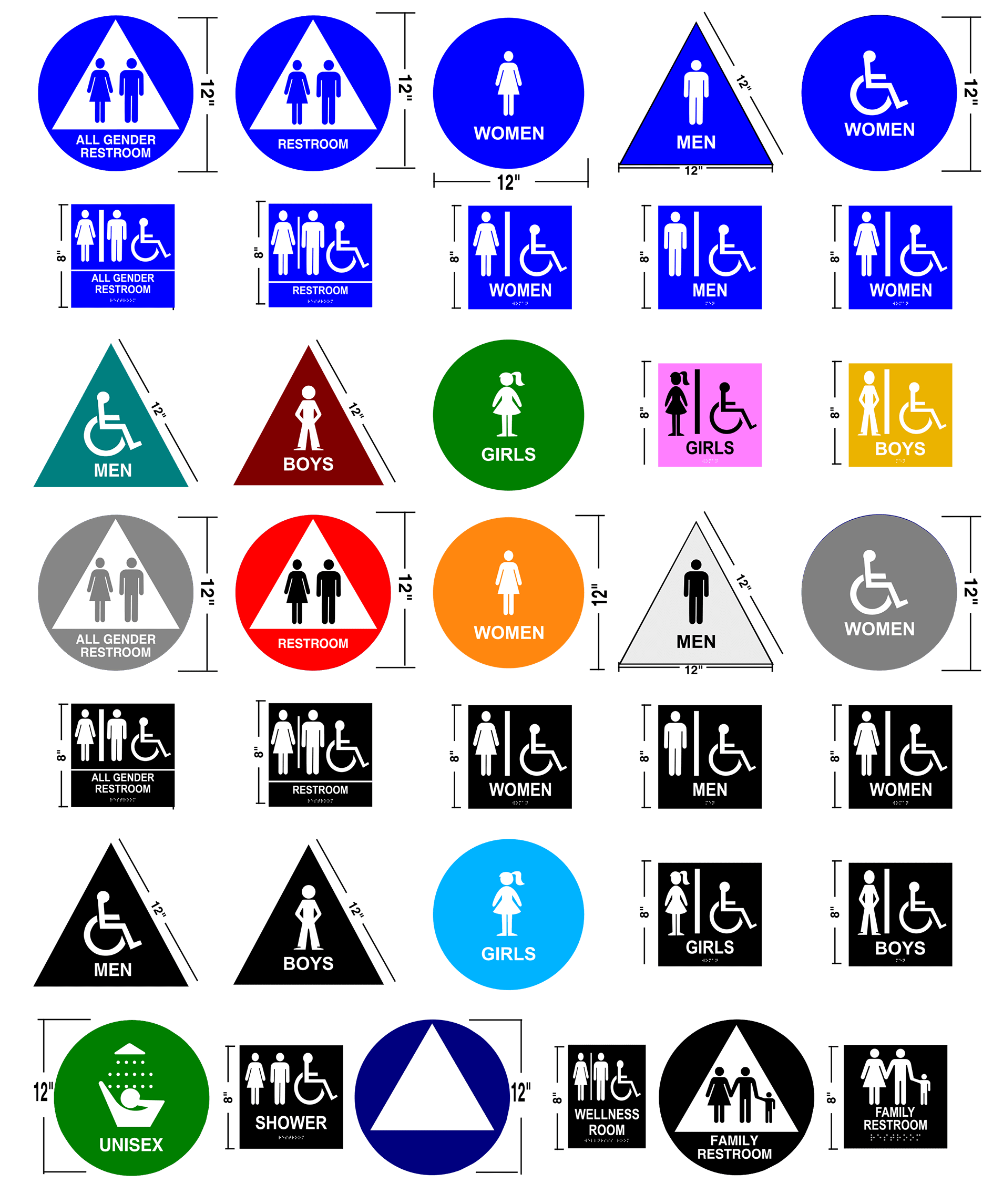Exactly How ADA Signs Improve Ease Of Access for Everyone
Exactly How ADA Signs Improve Ease Of Access for Everyone
Blog Article
Checking Out the Secret Attributes of ADA Signs for Improved Access
In the realm of access, ADA indicators offer as silent yet effective allies, making sure that rooms are navigable and inclusive for people with impairments. By incorporating Braille and tactile components, these indications damage barriers for the aesthetically impaired, while high-contrast color systems and clear font styles provide to varied visual requirements.
Importance of ADA Compliance
Making sure compliance with the Americans with Disabilities Act (ADA) is important for cultivating inclusivity and equal gain access to in public spaces and workplaces. The ADA, passed in 1990, mandates that all public facilities, employers, and transportation solutions suit individuals with specials needs, guaranteeing they appreciate the very same civil liberties and possibilities as others. Conformity with ADA standards not only fulfills lawful obligations however additionally enhances an organization's track record by demonstrating its dedication to diversity and inclusivity.
Among the key aspects of ADA conformity is the implementation of available signs. ADA indicators are made to make sure that individuals with impairments can quickly browse through structures and spaces. These indications must stick to specific standards concerning dimension, typeface, shade comparison, and positioning to assure exposure and readability for all. Effectively executed ADA signage aids eliminate barriers that individuals with disabilities usually come across, thereby advertising their independence and confidence (ADA Signs).
Furthermore, sticking to ADA laws can alleviate the danger of lawful repercussions and potential fines. Organizations that fall short to conform with ADA standards may encounter charges or legal actions, which can be both destructive and financially troublesome to their public photo. Therefore, ADA compliance is essential to fostering a fair environment for everybody.
Braille and Tactile Elements
The unification of Braille and tactile elements right into ADA signage personifies the concepts of ease of access and inclusivity. It is commonly put under the matching text on signage to guarantee that individuals can access the info without aesthetic aid.
Responsive components expand past Braille and consist of elevated icons and characters. These components are created to be discernible by touch, allowing people to recognize space numbers, bathrooms, leaves, and other vital locations. The ADA sets particular standards relating to the size, spacing, and positioning of these responsive elements to optimize readability and guarantee uniformity throughout various atmospheres.

High-Contrast Color Schemes
High-contrast color plans play a critical duty in boosting the exposure and readability of ADA signs for people with aesthetic problems. These systems are crucial as they take full advantage of the difference in light reflectance in between text and history, making sure that indications are quickly noticeable, even from a range. The Americans with Disabilities Act (ADA) mandates using certain color contrasts to suit those with minimal vision, making it a crucial facet of conformity.
The effectiveness of high-contrast shades depends on their capability to attract attention in various lighting conditions, including dimly lit environments and areas with glare. Normally, dark text on a light background or light message on a dark background is used to accomplish optimum comparison. For instance, black message on a yellow or white background supplies a plain visual distinction that helps in fast recognition and comprehension.

Legible Fonts and Text Size
When considering the style of ADA signs, the option of clear fonts and appropriate message dimension can not be overemphasized. These elements are crucial for making certain that indicators come to people with aesthetic problems. The Americans with Disabilities Act (ADA) mandates that fonts have to be sans-serif and not italic, oblique, manuscript, very ornamental, or of uncommon type. These requirements aid make sure that the message is quickly readable from a range and that the characters are distinguishable to varied audiences.
According to ADA standards, the minimum message height more information must be 5/8 inch, and it ought to raise proportionally with seeing range. Uniformity in text dimension adds to a cohesive visual experience, assisting people in navigating settings efficiently.
Additionally, spacing between lines and letters is indispensable to clarity. Adequate spacing protects against personalities from showing up crowded, improving readability. By sticking to these criteria, designers can dramatically improve accessibility, ensuring that signage serves its intended purpose for all people, despite their visual abilities.
Efficient Placement Strategies
Strategic placement of ADA signage is necessary for making the most of ease of access and guaranteeing compliance with lawful requirements. ADA standards specify that indications should be placed at a height in between 48 to 60 inches from the ground to ensure they are within the line of sight for both standing and seated individuals.
Furthermore, indications need to be placed beside the lock side of doors to enable simple recognition before entrance. This positioning aids individuals find areas and areas without blockage. In instances where there click this site is no door, indicators should be located on the nearest nearby wall surface. Uniformity in indicator positioning throughout a facility enhances predictability, decreasing complication and enhancing overall customer experience.

Conclusion
ADA indicators play an important role in promoting ease of access by incorporating functions that attend to the demands of individuals with impairments. These components collectively cultivate a comprehensive environment, highlighting the importance of ADA conformity in making certain equivalent gain access to for all.
In the realm of ease of access, ADA indicators serve as silent yet powerful allies, making certain that areas are navigable and inclusive for people with disabilities. The ADA, established in 1990, mandates that all public centers, this post employers, and transport services fit individuals with handicaps, guaranteeing they appreciate the same civil liberties and possibilities as others. ADA Signs. ADA indications are created to make sure that people with impairments can quickly browse through buildings and spaces. ADA guidelines stipulate that indications must be installed at an elevation in between 48 to 60 inches from the ground to guarantee they are within the line of sight for both standing and seated individuals.ADA signs play a vital function in promoting access by incorporating functions that attend to the requirements of individuals with disabilities
Report this page